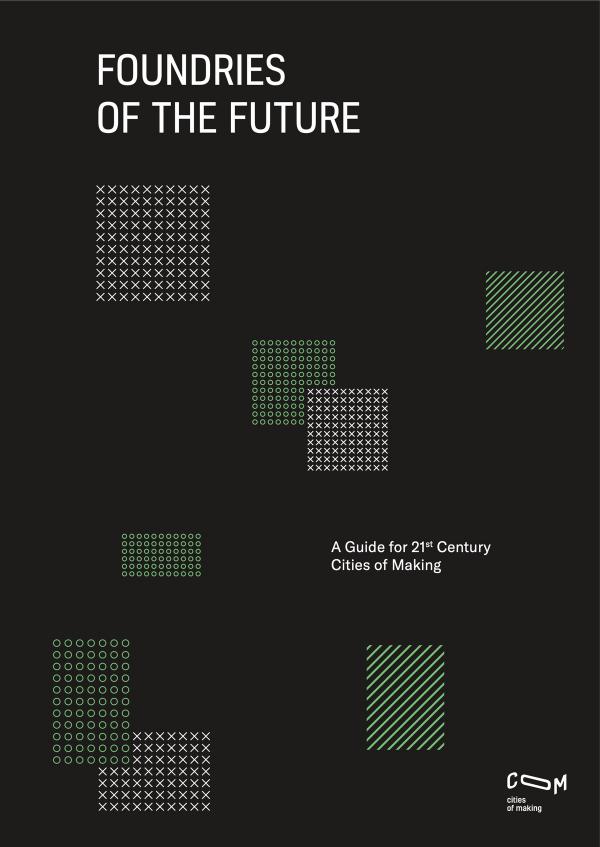Foundries of the Future
A Guide for 21st Century Cities of Making
Downloads

Synopsis
This book attempts to shed light on the ways manufacturing can address urban challenges, it exposes constraints for the manufacturing sector and provides fifty patterns for working with urban manufacturing. This book has been written as a manual to help politicians, public authorities, planners, designers and community organisations to be able to plan, discuss and collaborate by developing more productive urban manufacturing. The book is split into two parts.
We first cover an abridged history of the late nineteenth and early twentieth centuries, noting how European cities evolved rapidly by harnessing manufacturing, and then how the late twentieth century led to a radical shift in how cities work and think. We’re now at a crossroads between actors that do not see the need for manufacturing in cities and those that consider it vital for a prosperous urban future. Part of the tension comes from the fact that manufacturing is considered a ‘weak land use’ compared to activities such as real-estate development, which has been considered more financially attractive by many actors in the private and public sector. This real estate-oriented development narrative is increasingly regarded as short-sighted, but will not change without an alternative vision. We have therefore elaborated a narrative on how urban manufacturing responds to four specific challenges facing cities and how in turn manufacturing needs cities. In practice, planning and design for a topic like this is highly challenging.
The second part of the book is intended as a handbook. By synthesising our research and fieldwork conducted in a number of cities, we have encountered many similarities in terms of problems, challenges and solutions for urban manufacturing. Inspired by the seminal 1977 book, ‘A Pattern Language’ we have translated our findings into fifty patterns which help render the diversity of issues concerning manufacturing more tangible. As both teamwork and negotiation are necessary, exercises and methods are provided to use the patterns. Finally, we have set out twelve key action areas as possible starting points for supporting urban manufacturing.





